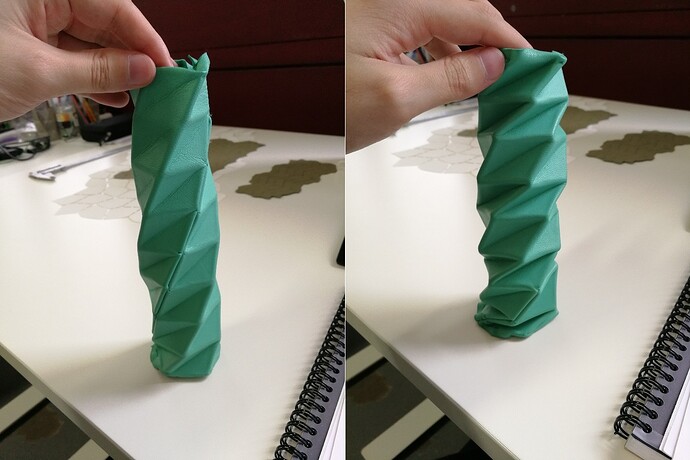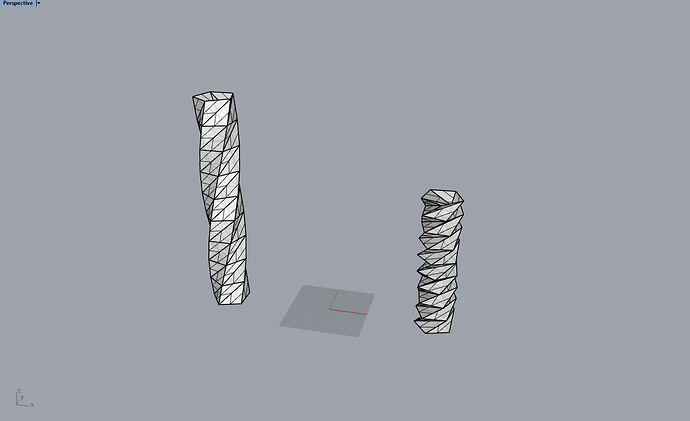Hi everyone, I an looking for advice from the community for a matter I’m stuck with.
I need to build a polysurface recreating a sleeve folding in the origami style like in this picture
When it contracts, it folds itself towards the inside, and the top part rotates counterclockwise.
As of now I can build it in its deployed and retracted forms, but my boss wants a model he could see unfold on screen.
So I have 2 problems :
1st, what can I do too keep the triangular surfaces of the deployed form in the retracted form ?
Until now, I first built a segment of the deployed form (1), then lowered the top building curve to the dimension of the retracted form (2), in this case from 120mm to 75.55mm.
Them I rotated the triangular surface along the pentagon side so it’s tip would be aligned to the top pentagon, then rotated that top pentagon to align an angle to the tip of the triangular surface (3).
I then delete that surface and build a new 3 points surface with a side of the lower pentagon and the angle of the top one I’ve aligned in the step before (5)
To finish, I duplicate my new triangular surface to build a segment of the retracted form.
This was good enough when all I had to do was to estimate if I had enough room to put an elevation column inside my sleeve, but now that I need to build an evolving surface this will not do anymore.
2nd, and it’s tied to the first question, is how do I build a folding surface ?
What I had in mind was to build the deployed form then fold it to the retracted form, but I don’t know how to do that.
The person who worked on a different version of the project before me used Grasshopper for this, but it’s a plugin I’ve never been taught how to use and that I don’t understand at all.
I’ll add the file tomorrow when I go back to work.
I appologize if what I’m saying is confusing, but I don’t really know how to properly put my thought process into words or explain how I do things.
If anyone could give me some pointers on how to progress from there, I would be very grateful.
Many thanks in advance.


